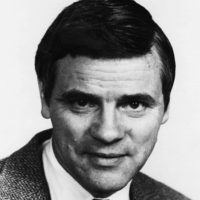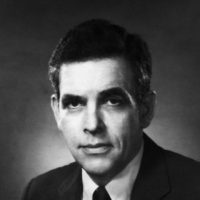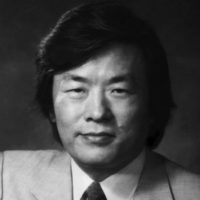
Leroy Hood
California Institute of Technology

Philip Leder
Harvard Medical School

Susumu Tonegawa
Massachusetts Institute of Technology
For imaginative studies of somatic recombinations in the immune system, detailing in molecular terms the genetics of antibody diversity.
Leroy Hood
Antibodies are protein molecules essential to the body's defense against potentially harmful organisms and substances, which are known as antigens. The immune system must recognize each new antigen and construct an antibody to fit each antigen precisely.
Dr. Hood applied the techniques of molecular biology to show how a limited amount of genetic information can give rise to an unlimited variety of antibodies. He has been instrumental in documenting in elegant detail the immune system's method of rearranging pre-existing sequences of DNA to make the genes for each new antibody.
Dr. Hood investigated the variable part of the light chains of different antibodies and found their chemical structures belonged to three distinct families. This led him to conclude that at least three separate genes encoded these portions.
Dr. Hood and his co-workers then focused on the heavy chain portion of antibodies. It was known that these consisted of two possible combinations. Dr. Hood discovered an additional variable portion, the diversifying element, which provides more variations in the heavy chain.
In addition, Dr. Hood found that random genetic changes, introduced as the genes are built, add still another dimension to the rich variability of antibody genes.
To Dr. Hood, whose prolific and detailed investigations have translated the genetics of antibody diversity into explicit molecular terms, this 1987 Albert Lasker Basic Medical Research Award is given.
Philip Leder
In his early work, Dr. Leder developed the first recombinant DNA vector system that met specified safety standards. Using this system, he and his colleagues cloned the gene for globin.
Dr. Leder later found out that an antibody-producing B cell methodically rearranges the two genes which encode the light chain portion of the immunoglobulin molecule.
Dr. Leder demonstrated that, in virtually all cells of Burkitt's lymphoma, a B-cell malignancy, the c-myc gene, which is related to cell division and is normally located on chromosome 8, has been joined to an immunoglobulin gene on a different chromosome. This discovery led him to conclude that in these malignant cells, the misplaced gene disturbed the way cell division is regulated.
In a stunning series of experiments, Dr. Leder stripped the c-myc gene of its regulatory sequences and introduced the deregulated gene into laboratory mice. These transgenic mice produced offspring with an inherited tendency to develop cancers involving c-myc. Dr. Leder thus proved that the deregulation of an otherwise normal gene can permit cancer to develop.
To Dr. Leder, for his studies of the genetics of antibody diversity, which led to his profound discovery that cancer can result from a disruption in gene regulation, this 1987 Albert Lasker Basic Medical Research Award is given.
For brilliantly demonstrating that the DNA responsible for antibody production is routinely reshuffled to create new genes during the lifetime of an individual.
Susumu Tonegawa
Dr. Tonegawa conceived and performed a creative series of experiments to determine whether an individual inherits a single, predetermined gene for each type of antibody made during his lifetime, or whether the immune system rearranges genetic information to create new genes responsible for the production of each type of antibody.
To explore this major biological issue, Dr. Tonegawa devised an ingenious and demanding technique for comparing DNA from different sources. He used enzymes to break up the DNA from cells of the germ line and from antibody-making B cells of the same individual. Then he created a radiolabeled probe from antibody messenger RNA to search for the immunoglobulin-producing genes in the two masses of DNA fragments.
He found that in B-cell DNA, these genes were located in places different from their sites in inherited germ-cell DNA. This proved that the inherited immunoglobulin genes are rearranged during the individual’s lifetime.
Thus, in one crucial experiment, Dr. Tonegawa determined the genetic mechanism of antibody diversity and showed that new genes are created through rearrangement of DNA during B-cell differentiation. In further research, Dr. Tonegawa confirmed and determined the details of his discovery by cloning and sequencing antibody genes.
To Dr. Tonegawa, for proving brilliantly that antibody diversity is the result of an ordered system of gene rearrangement, and for demonstrating that the DNA responsible for antibody production is routinely reorganized to create new genes during the lifetime of an individual, this 1987 Albert Lasker Basic Medical Research Award is given.
